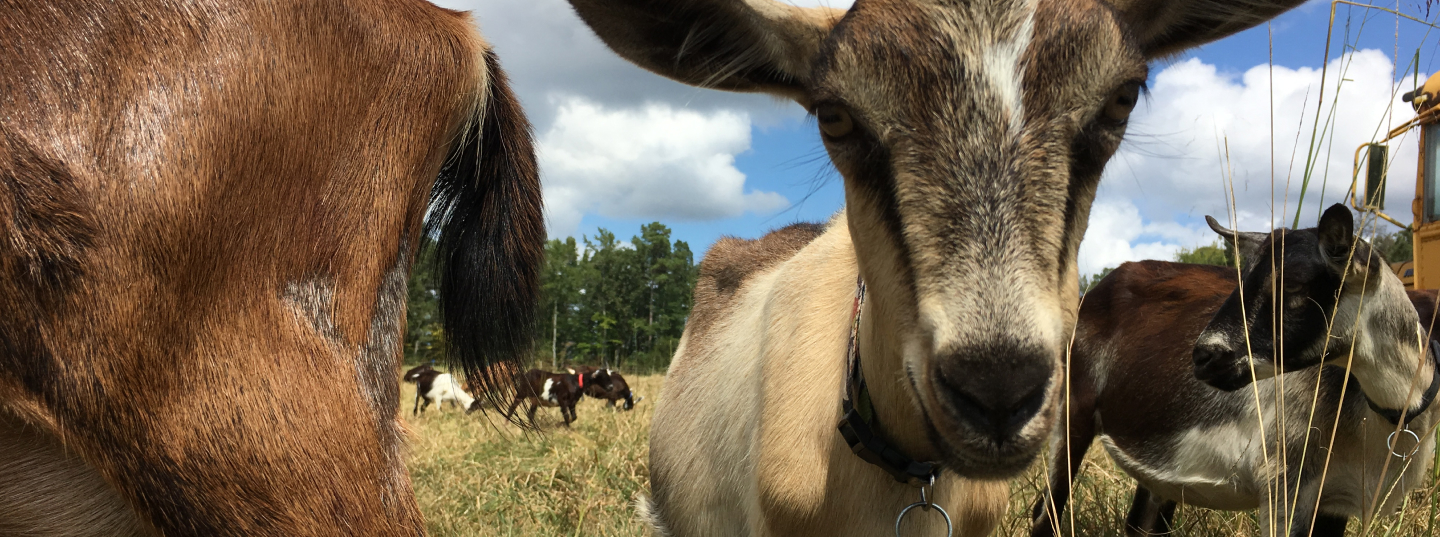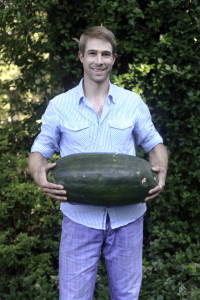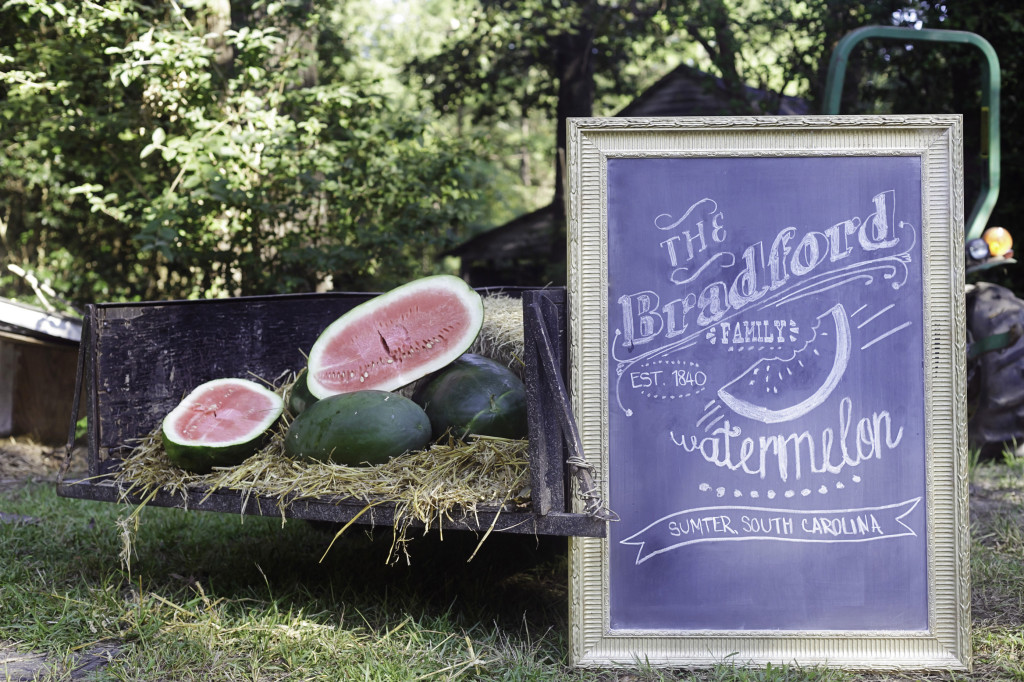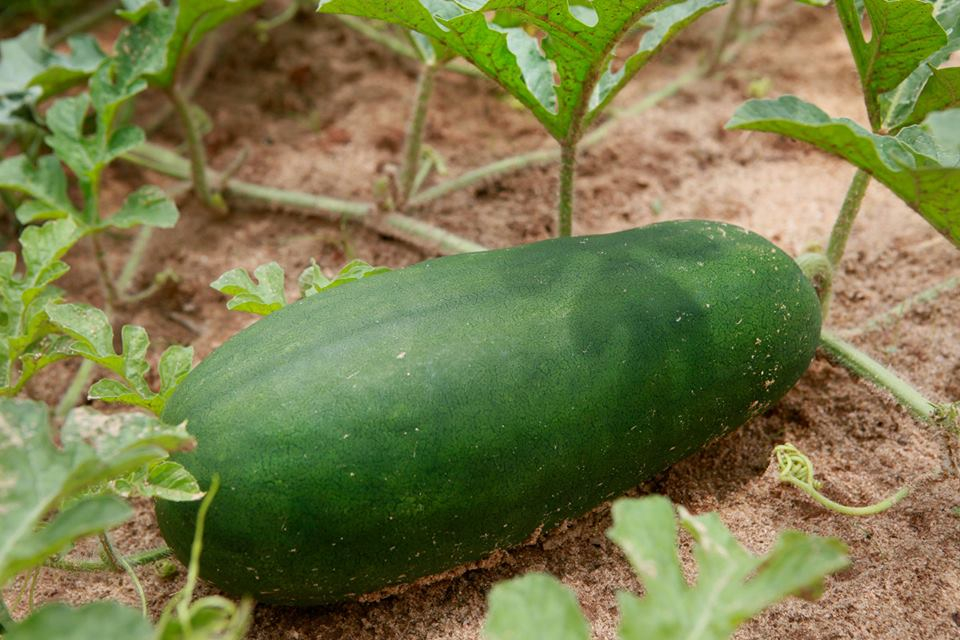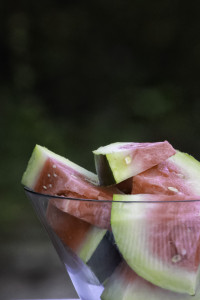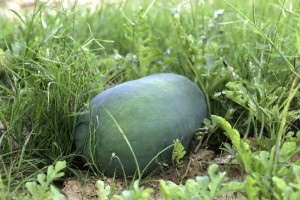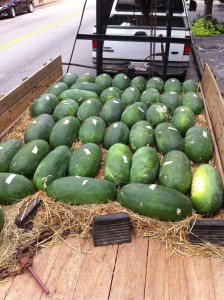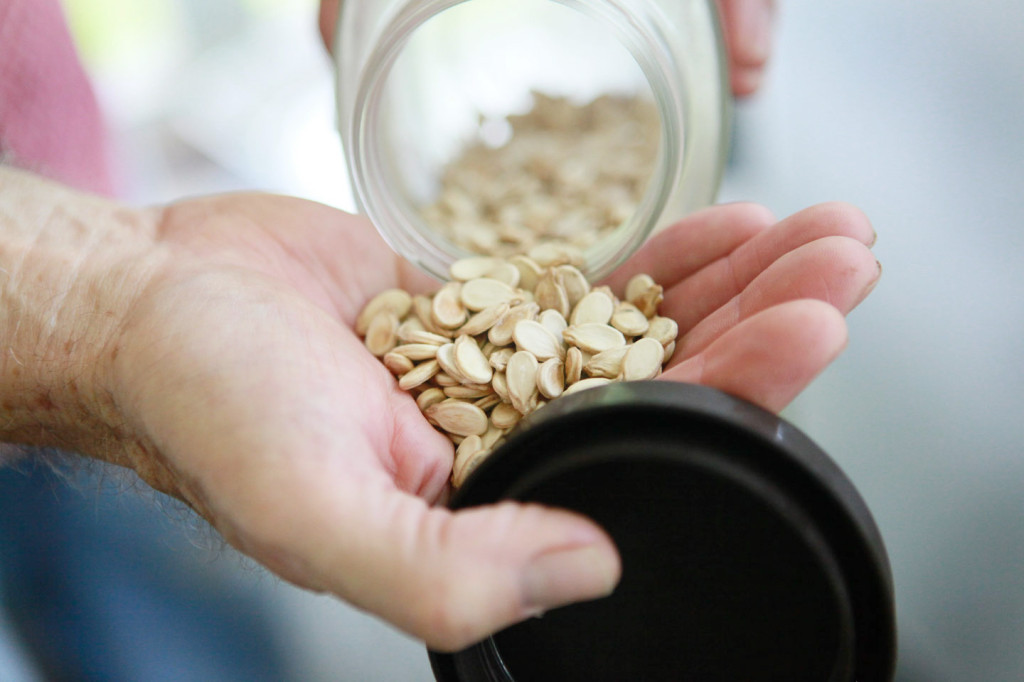Guest Post by Nat Bradford
Photos courtesy of Heather Grillot
I found myself in one of Charleston’s most acclaimed restaurants a few weeks ago with some of the most talented budding chefs in the world and Thomas Locke from CFSA resurrecting a recipe that had not been attempted in 125 years with a fruit that was supposed to be extinct. I could not have predicted this a year ago. It began last fall when I had the privilege of attending my first Sustainable Ag Conference in Greenville, SC when a dear friend’s wife could not attend and had an extra ticket. That turned out to be the catalyst of change that would redefine the rest of my life.
A bit of history first though, my Great granddaddy “Chief” Bradford was born with the green gene, with a real knack for mixing, tinkering, and improving the crops on his farm. His passion, though, was for his “Bradford” watermelons, known far and wide as the sweetest and most flavorful around. It was the finest watermelon for making pickled rind, too, spoon tender right down to its dark green skin. It was this tender skin, undoubtedly, that made it nigh impossible to ship and so it never roamed far from our family fields. He always planted the Bradford late and had developed in them strength to fend off the diseases that tend to plague the cucurbit family at the end of the summer. Everyone else was out of melons by the time his started coming in so if you wanted a watermelon you had to see Chief.
He taught my Granddaddy everything about growing and preserving the Bradford watermelon line. From him the seeds and knowledge were passed down to my Dad, and finally to me. That’s the story the way I knew it until the summer of 1998.
Fortunately, I inherited my Great granddaddy’s green gene and his passion for watermelon that in a roundabout way led to a career in landscape architecture. In the spring of 1997 while doing research for an internship I had at Longwood Gardens in Kennett Square, PA, I came across a book from the 1850’s that chronicled the best vegetables and fruits of that time. Of course, I quickly flipped to the section on watermelons, several of which were listed as being far more superior to any market melon of that day. Of those listed the author distinguished one as being the absolute best, and to my surprise it was called Bradford, originated in the central portion of South Carolina! My Bradford family had been in the heart of South Carolina since before the American Revolution. Could this Bradford watermelon of the 1800s be the same as our Bradford watermelon? I would carry this question unanswered for the next 14 years.
So here I am in Greenville, SC at CFSA’s sustainable agriculture conference. After meeting so many wonderful people passionate about healthy food and farming I found my love of farming reignited. Landscape Architecture was not going to be enough to squelch this burning desire to farm. I wanted to get back into beekeeping again, I wanted to grow a big vegetable garden, most importantly, I wanted to know the answer to the unresolved Bradford watermelon question. One sleepless night I sat down to the computer and began searching for anything Bradford watermelon related. Eventually, I came across a site called American Heritage Vegetables by Professor David Shields at the University of South Carolina. David’s passion is reconnecting with generations old heritage vegetable varieties that shaped our food system into what it is today. His section on watermelons listed the same varieties that I had seen in the 1850s book including the Bradford watermelon. Could David possibly solve my watermelon mystery? I sent him an email in the middle of the night explaining my story and requesting his insight. By early that morning I would have my answer.
Indeed they were one and the same watermelon! It was my namesake, Nathaniel Bradford, my sixth Great Grandfather that bred the Bradford watermelon, preserved undetected for 170 years and believe to be extinct for around a century. David was able to finish the story. Nathaniel had shared seeds of the perfected watermelon with some well-connected and successful seedsmen in the early 1850s. From those seeds a very profitable commercial line developed and soon became the most popular and widespread watermelon of the 19th century in spite of its resistance to shipping. By the early 1900s watermelons had been developed with hard, thick skins and tough rinds at the sacrifice of flavor, ultimately more profitable because they were able to be shipped stacked many layers deep on railroad cars with very little breakage. Thus, no longer was the ambitious farmer relegated to marketing his melons to his locale. And so the greatest watermelon to have come from that great age of watermelon breeding, the Bradford watermelon, fell out of cultivation and became lost to the annuls of history. However, although the commercial line disappeared, my family never stopped growing the original watermelon.
Armed with an amazing story, an insatiable desire to farm, and the heritage seeds of quite possibly the best watermelon ever created, I did what came naturally. I planted the biggest field of Bradford watermelons our family had ever grown…a half acre. It may not sound like much, but it was quite risky when the last of the seed of Bradford watermelon on the planet could be contained in a couple of mason jars! And what were we going to do with half an acre of watermelons? An extraordinary story needed an extraordinary mission.
My family and I prayed for guidance on how to use this family treasure in an amazing way that would bring God glory and have great impact in the world. One Sunday morning in church our pastor was sharing about a mission that our church was supporting to drill fresh water wells in Africa. He shared a statistic that floored me. Every day around the world over 3000 people die of illnesses from poor drinking water, many of them are small children. That’s one person every 30 seconds. Most can be cured with a 30 cent pill. I imagined one of those grieving mothers losing her precious child. I imagined how painful it would be to lose one of my children that way. Unbearable. Unconscionable. That instant Watermelons for Water was conceived. Our purpose was to save lives. Our mission was to drill fresh water wells all over the world and provide medication to treat waterborne illnesses. Our half acre of Bradford watermelons would be how.
My oldest 3 sons and I planted six rows of watermelons—220 hills with 2 plants per hill for a total of 440 plants. If we had a perfect yield we would get one big melon per vine. Harvest would be in about 3 months and I suddenly needed to come up with a plan to move the crop. Being a full time business owner, I needed to focus on a simple way to move the entire crop quickly, without taking too much time from my business. I made plans to find a brewery that would make a special beer with our Bradford watermelon capitalizing on our story. A portion of the proceeds would go to our cause Watermelons for Water. A brewery was found in Alabama. It was going to be clean and simple.
David came out to our field for a visit a month before harvest to see for the first time our historic watermelons growing. He asked what kind of plans I was making for the crop and I shared my brewery plans with him. The next day I was contacted by a friend of his, Glenn Roberts, owner of Anson Mills. David and Glenn had been talking about Bradford watermelon molasses that had been really popular in the 1800s, but fell out of use as the watermelons became scarce. They would not have an opportunity to make any molasses if all the melons ended up at a brewery much less eat a fresh one. Glenn talked with me about how important it was that this watermelon be experienced in South Carolina, its birthplace, not in an Alabama brewery. Then he made a proposal. He offered to cover all the cost of processing the seedmelons (the best of the bunch) into watermelon molasses and my Grandmother’s watermelon rind pickle, as well as save all the seeds. The finished product would be mine to do with as I chose. It was an offer I couldn’t refuse.
There was some difficulty finding a co-packager at the last minute. That’s when another of David and Glenn’s friends and world-renowned chef, Sean Brock, volunteered his kitchen and staff at McCrady’s Restaurant in Charleston to handle all the processing. Things were certainly coming together.
I was sharing some of our story and plans over the phone with Thomas Locke with the CFSA whom I had recently had the pleasure of meeting at dinner at The Roost Restaurant in Greenville. Thomas was following our Bradford watermelon story and offered to come to McCrady’s to help with all the processing and experience this historic event. Even my cousin and his wife joined to help. The plans were nailed down and the date was set.
I arrived in Charleston on a Friday morning with my big white truck and a gooseneck trailer loaded with 45 seedmelons carefully placed in bed of hay one layer deep. Thomas stopped traffic while I squeezed my way into several parking spaces on Bay Street. Needless to say we drew the attention of a small crowd of onlookers as a procession of white-suited chefs carried these 40 pound melons single file across the street and into the kitchen. With a little luck, by the end of the day we would have the first batch of Bradford watermelon molasses in 125 years and the first batch of rind pickle since my Grandmother passed away in 2006.
I kept thinking to myself, is this actually happening?
Sean appointed Chef Daniel Heinze to manage the whole project while Chef Jeremiah Langhorne took on the molasses making. It became quite an undertaking. From those 45 melons we extracted almost 80 gallons of beautiful red juice, eventually reduced down to about 8 gallons of molasses through the simple yet extremely time consuming task of slowly simmering and stirring. There were several different batches each having distinct flavors based on how Jeremiah regulated temperature and time variations. All of the batches were exceptional and not anything like molasses that folks are familiar with! The color is phenomenal. The fragrance is the essence of watermelon infused with caramel! The taste is otherworldly. These young creative chefs immediately began imagining the applications: barbeque sauce, glazed over a salty smoke cured ham, cocktails, drizzled over pastries. Its applications would be as limitless as their imaginations.
The pickled watermelon rind was a hit, too. Daniel was amazed at how good the recipe was. Jeremiah said that many times folks would come in touting their grandmother’s recipe, but they never lived up to the expectation. But this one far exceeded his expectation! As it would turn out, we spent 3 days and nights processing those 45 melons, finally ending up with over 400 one-quart jars of the finest rind pickle in existence and about 8 gallons of molasses…the only Bradford watermelon molasses in the world.
It was such an amazing experience. So many wonderful people came together to make history and bring a nearly extinct, and certainly lost food back to our tables. And our crop, we had better than a perfect yield! 465 big, beautiful watermelons were harvested off of 440 plants. That was a tremendous blessing especially for this cold wet year when so many others suffered greatly reduced yields or no yield at all. Watermelons for Water was a huge success, too. We were able to raise enough money to impact the lives of 12,000 people in need of fresh water and medication. It was a beautiful experience for my family and me, especially to see my young sons work so hard and selflessly to help people whom they never have met.
This was a life changing experience. I am blown away that God would choose something as simple as a watermelon to do so much good and impact so many lives positively. But why not? It’s His story after all, and the best is still to come.
You can learn more about the Bradford Watermelon and Nat’s project, Watermelons for Water by visiting his facebook page at the web address below or by searching for Watermelons for Water.
www.facebook.com/pages/Watermelons-for-Water/596239020420784


